Football fans flocking to Germany for Euro 2024 can expect to clash with disgruntled locals, rival supporters or even the German police – but there’s one more enemy they must watch out for.
The humble raccoon, who is often seen as a good friend with cute fur and human-like hands and a charming appearance, has become a pest in several German cities, breaking into houses and raiding garbage cans – all the while enjoying a pint of alcohol.
Raccoons are native to North America but were brought to Germany in the 1930s when the head of the local forestry association decided to release four menaces on the banks of the Eder River near the Edersee Dam.
This move earned them the moniker ‘Nazi raccoons’, as the famous Hermann Goering – Hitler’s fearsome Luftwaffe commander during World War II – was in charge of forestry and nature conservation at the time of their establishment.
Without natural predators, the population exploded – so much so that there are now around 2 million raccoons thought to be spread across Germany.
Euro 2024 organizers hope to welcome the same number of football fans from across the continent and beyond during the tournament’s month-long tournament, and raccoons are so accustomed that the unsuspecting animals may find themselves fearlessly chased by footballs – or perhaps robbed of their beer.

Dozens of raccoons are seen flooding the streets of Germany
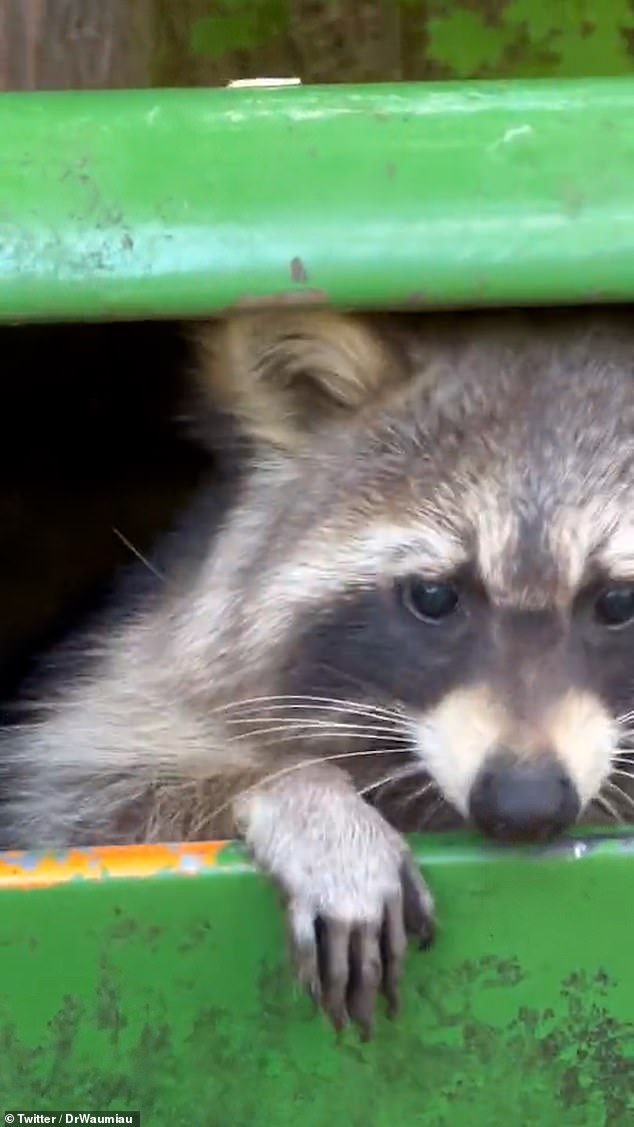
The humble raccoon, who is often seen as a good friend with cute fur and human-like hands and a cute expression, has gone viral in several German cities.
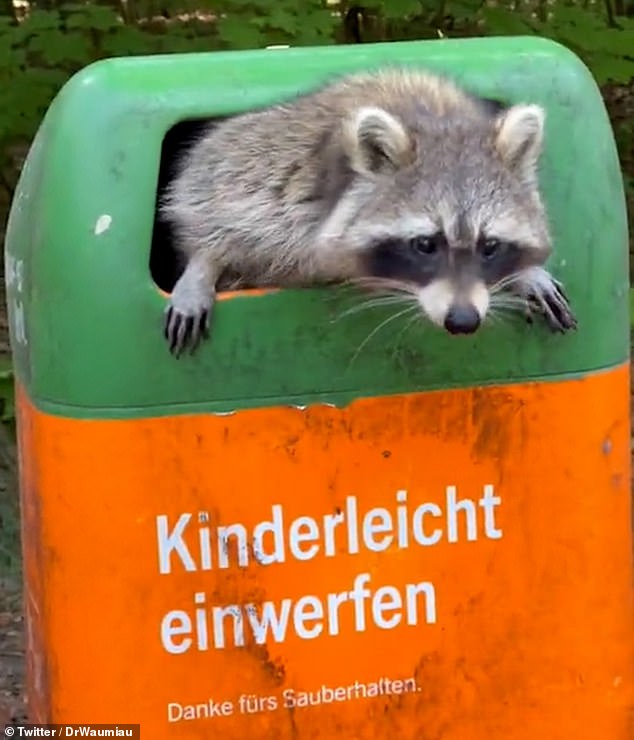
Raccoons are native to North America but were brought to Germany in the 1930s when the head of the local forest agency decided to release four menaces on the banks of the Eder river near the Edersee Dam.
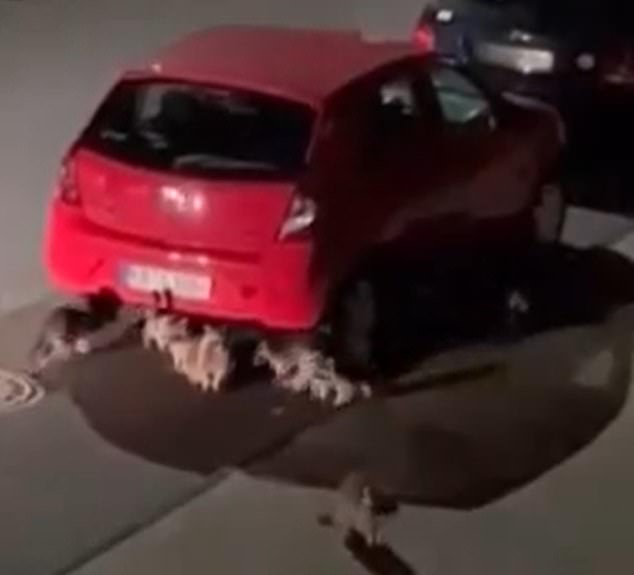
Without natural predators, the population exploded – so much so that there are now 2 million raccoons thought to be spread across Germany.
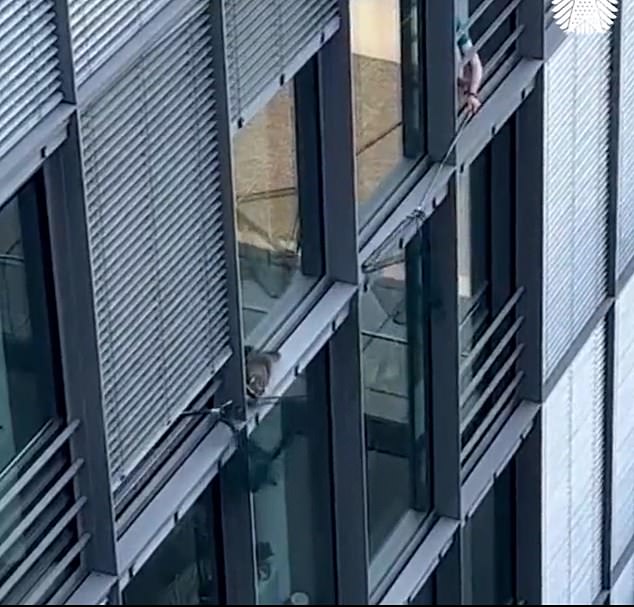
A raccoon is seen scaling an apartment building as a disgruntled resident tries to chase him away.
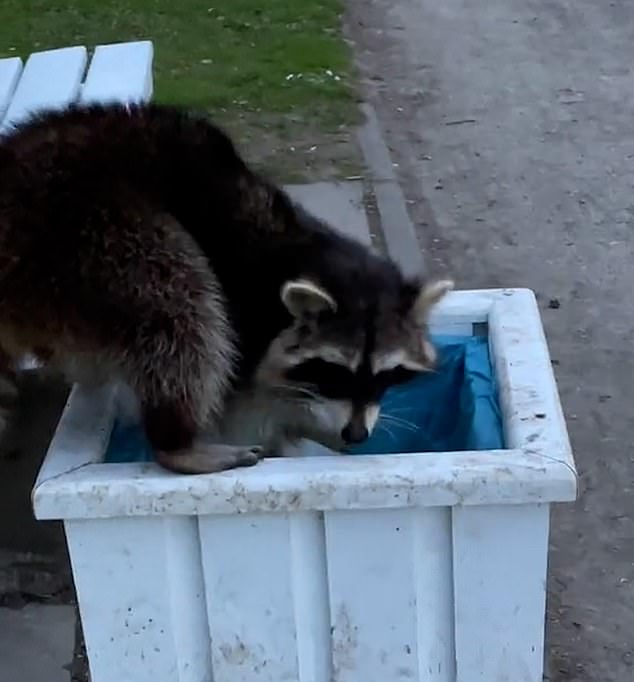
Clips have shown them throwing bullets into rubbish bins and getting drunk on spilled alcohol – which inevitably leads to more chaos.
Many videos from Germany have shown raccoons in all kinds of strange and often chaotic situations.
They have gained a reputation for sneaking into people’s homes and staying in their attics, or sitting on the balconies of apartment buildings.
Other clips have shown them jumping over rubbish bins and getting drunk on spilled alcohol – which inevitably leads to more chaos.
In one disturbing incident, a coyote somehow managed to climb a 130-foot-tall crane on a building site before landing in the operator’s cab, forcing police to lift the structure and free the angry mammal from its new nest.
The German city of Kassel, near the dam where raccoons were first released in the middle of the country, is known throughout the country as the animal’s “home town” and has leaned into the joke, declaring itself the raccoon ‘capital of Europe’.
Video footage taken by residents of Kassel shows herds of raccoons flooding the streets, especially at night when they seem to be most active.
People are very discouraged from feeding them for fear they will become bolder.
More than 30,000 raccoons are believed to live in and around the city of 200,000 people, meaning there is about one raccoon for every six human residents.
But the animals have spread further, crossing the German countryside and invading other towns and cities, so much so that the German capital – some 200 miles from Kassel – has had to contend with their encroachment.
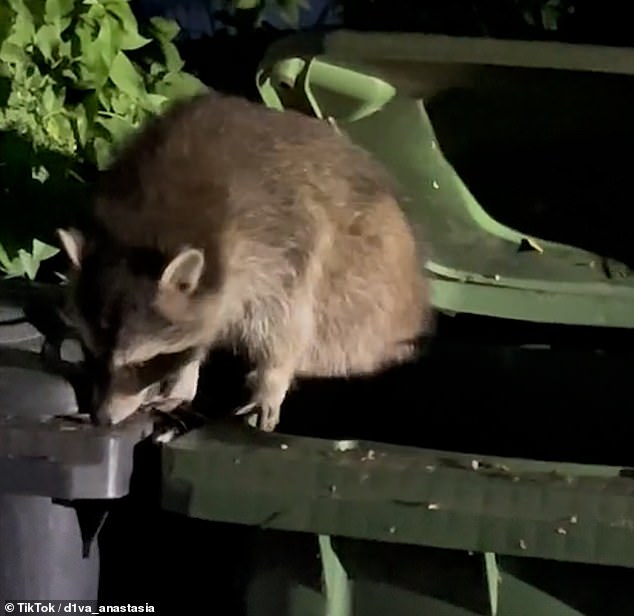
People are very discouraged from feeding them for fear they will become bolder

Raccoons are now seen as an invasive species in Germany and are regularly euthanized
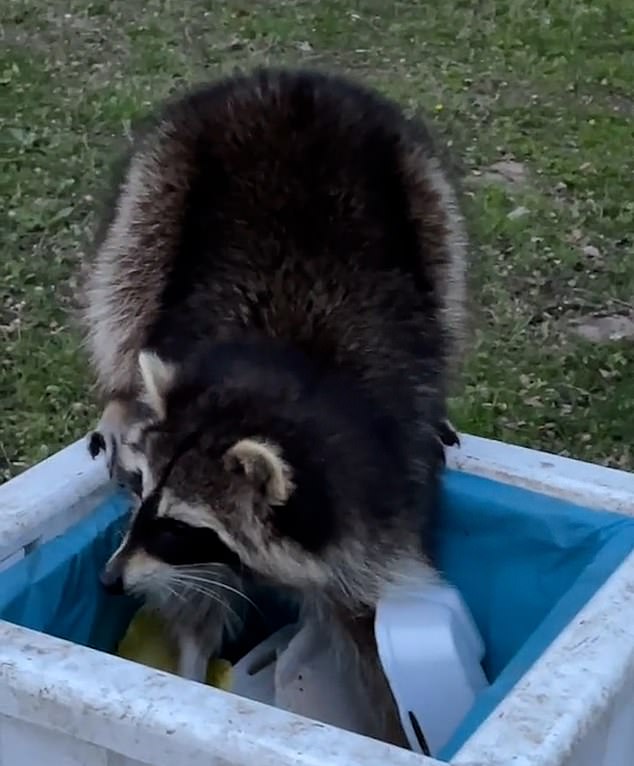
Raccoon dives into car in Kassel – ‘raccoon capital of Europe’
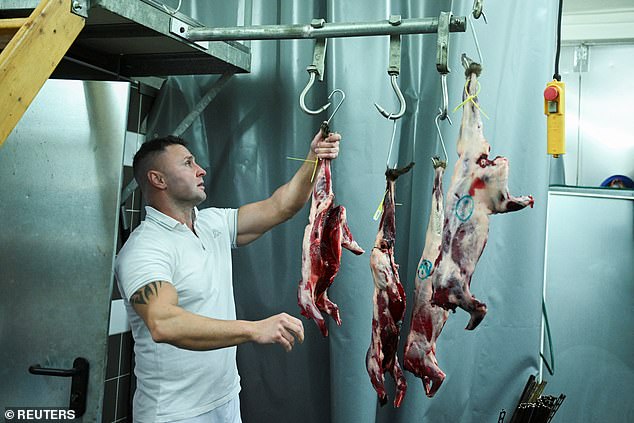
Hunter Michael Reiss hangs skinned raccoons in the meat processing room at his butcher ‘Wildererhuette’, where he processes raccoon meat into sausages and meatballs, in Kade, Saxony-Anhalt, Germany April 11, 2024
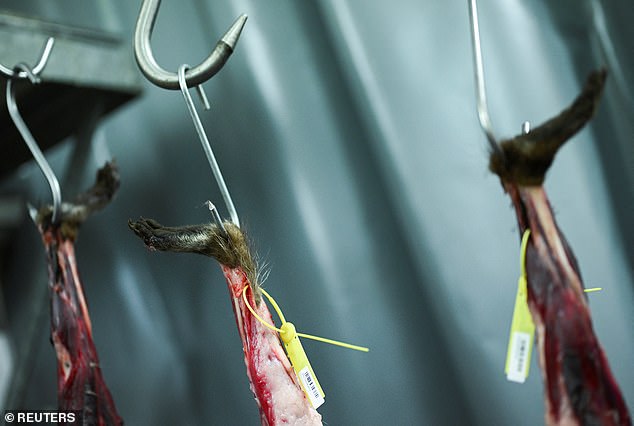
About 200,000 raccoons were caught and killed last year by hunters and pest control companies, who without weapons use traps to trap the mammals.
In 2017, a raccoon set off an explosion at a power plant in the western Berlin suburb of Siemensstadt, somehow managing to briefly surround a 110,000-volt transformer before running into nearby woods.
German nature authorities are now forced to regularly euthanize the animals to prevent them from destroying ecosystems.
They are seen as an invasive species, with conservationists warning birds and reptiles in Germany’s forests and woodlands are at risk because raccoons can run wild without threat from predators.
About 200,000 raccoons were trapped and killed last year by hunters and pest control companies, who, in the absence of weapons, use traps to capture the mammals.
Some butchers have even taken to processing raccoon meat due to its availability.
One butcher in particular, Michael Reiss, opened a farm shop ‘Wildererruette’ in the town of Kade in Germany’s Saxony-Anhalt region, and has started selling raccoon sausages and meatballs to curious locals..
#Bands #marauding #raccoons #released #order #Hermann #Goering #wreak #havoc #German #cities #causing #explosions #alcohol #home #invasions